Wolfram Language users make up an incredibly diverse community. People from all around the globe use Wolfram technologies in a variety of fields and industries. High-school and college students begin to use the Wolfram Language in all types of classes as well as for their own projects, and educators at all institutional levels use Wolfram products to prepare for and teach courses—at the world’s top 200 universities and beyond.
We’ve rounded up some of our users’ recently published books, and were honored to speak with two authors about their projects.
Beginning Mathematica and Wolfram for Data Science: Applications in Data Analysis, Machine Learning, and Neural Networks
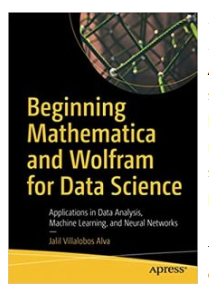
Beginning Mathematica and Wolfram for Data Science: Applications in Data Analysis, Machine Learning, and Neural Networks by Jalil Villalobos Alva introduces readers to the Wolfram Language, its syntax and the structure of Mathematica. Published by Apress on February 2, 2021, the book demonstrates how to use Mathematica for data management and mathematical computations, as well as how to use notebooks as a standard format (which also serves to create detailed reports of the processes carried out). This book introduces readers to the Wolfram Data Repository and Mathematica’s machine learning functionality; shows how to import, export and visualize data; and demonstrates how to create datasets. Beginning Mathematica and Wolfram for Data Science is available for purchase on Amazon.
Villalobos Alva is an avid Wolfram Language programmer and Mathematica user who graduated with a degree in engineering physics from Universidad Iberoamericana in Mexico City. His research background covers quantum physics, bioinformatics, proteomics and protein design. Villalobos Alva’s academic interests include quantum technology, machine learning, stochastic processes and space engineering.
We caught up with Villalobos Alva to ask him about his new book and his experience with Mathematica.
Q: How did you first encounter Mathematica and the Wolfram Language?
A: The first time I used Mathematica was during my undergraduate degree in my calculus course. The version of Mathematica I used was Version 8—I remember that because the splash screen always appeared after running the program. I remember that the course was taught in a small computer lab, where the workstation had an old HP computer and a large worktable. Since then, I have been an active user of Mathematica and the Wolfram Language, with the recent collaboration and participation in the Wolfram Summer School, class of 2019.
Q: How does Beginning Mathematica and Wolfram for Data Science fit into the literature on data science?
A: The topics covered here are valuable concepts where data science is used in data management and many other fields, with the specific contribution that is this book. Key terms and concepts that are related to data science are used inside Mathematica. Along the way, the contribution done by this book is not limited to data science, but also offers an introductory perspective to the framework of neural networks with Mathematica.
Q: What was your writing process like?
A: I think that doing a project like a book is a challenge that you set yourself to know your limits. Also, I deeply believe that it is a self-learning process, and it is a way of knowing what my intellectual abilities can do. Of course, writing a book is a long, time-consuming process. At first, it seemed like a daunting task that I needed to find time for in any part of my daily life, and this is one of the amazing things about being able to write a book. There are many ways to organize yourself, but in my experience, it teaches you to organize your time seriously. It encouraged me to be more simple, focused and aware of the details, which together build a different perspective and make you more than you are now.
Q: Who do you see as the primary audience for Beginning Mathematica and Wolfram for Data Science?
A: This book is aimed at an audience that is interested in learning about data science and in turn learn its applications with Mathematica and the Wolfram Language. In general, it is not necessary to know about the language before, but prior knowledge of the Wolfram Language syntax would be an advantage for those who know it. This book will also be useful for coders and hobbyists, as well as for people in academia for research and scholarly projects, including students, researchers, professors and many others.
Q: How do you apply the topics of this book in your life?
A: The topics are important since they present how to use the Wolfram Language for data science from a theoretical and practical perspective, including a description of processes that are carried out throughout the day: coming up with a problem statement, thinking of new ideas and putting them into practice. Part of my day also demands a lot of reading, keeping up with the state of the art of the topics being discussed. Besides, the presentation and communication of results are essential, since a line of contact with other colleagues is often established where the form of communication is crucial to handing out and exposing information.
Fourier Transforms Using Mathematica
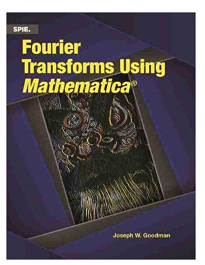
Dr. Joseph W. Goodman, author of Fourier Transforms Using Mathematica, is an engineer and physicist who attended Harvard as an undergrad and received his master’s degree and PhD in electrical engineering from Stanford. He taught electrical engineering at Stanford, and throughout his career focused on the field of optics. Dr. Goodman has retired from teaching but remains a professor emeritus and has been primarily spending time writing.
The title we’re featuring came together with two goals in mind: introducing the reader to the properties of Fourier transforms and their uses, and showing the reader the basics of using Mathematica and demonstrating its use in Fourier analysis. Unlike many other introductory treatments of the Fourier transform, this book focuses from the start on both one-dimensional and two-dimensional transforms—the latter of which play an important role in optics and digital image processing, as well as in many other applications.
Fourier Transforms Using Mathematica is now available for purchase on Amazon. We were honored to talk with Dr. Goodman about his experience using Mathematica and the process of writing his new book.
Q: How did you first encounter Mathematica and the Wolfram Language?
A: I first encountered Mathematica when I set about writing the second edition of my book, entitled Introduction to Fourier Optics. I used it extensively to create graphical illustrations of mathematical results. I have used it for a similar purpose in all of my subsequent books.
Q: How does this book fit into the currently available literature on Fourier transforms, and into Mathematica literature in general?
A: The two most popular books on Fourier transforms are one by Ron Bracewell and one by A. Papoulis. Both were written in the early sixties, as I recall, and predated the availability of powerful home computers. Mine follows Ron Bracewell’s approach (I learned Fourier transforms from his class at Stanford) with the addition of a strong emphasis on Mathematica code for illustrating the mathematical properties of such transforms. The real purpose of the book is to simultaneously teach Fourier transforms and Mathematica together, with the proviso that the Mathematica code is intentionally pretty simple and straightforward. I’m unaware of any other books on Fourier transforms that include code of any kind.
Laboratórios virtuais: Cálculo, álgebra e geometria (Virtual Laboratories: Calculus, Algebra and Geometry)

Author Márcio Rosa developed this book over 15 years of pursuing the best pedagogical strategies to use as a teacher. The goal of the book is to teach students the use of mathematics software in their studies. As computer software becomes more sophisticated, the human element of the work becomes more focused on formulating questions, interpreting results, understanding ideas and supervising the work of the computer—making mathematics more enjoyable and fun. The book takes advantage of colors, curves, surfaces, transparencies and animations to develop students’ ability to perform calculations in Wolfram Notebooks. Using the computational power and AI built into Mathematica, readers are able to immerse themselves in the content in a way that would not be available with traditional pencil-and-paper workbooks. This book aims to show students that mathematics can be colorful, artistic and fun.
Fizik ve mühendislikte Wolfram Mathematica (Wolfram Mathematica in Physics and Engineering)
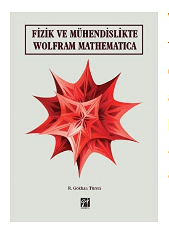
When author R. Gökhan Türeci noticed a lack of Turkish-language resources in the increasingly important subjects of computer programming and numerical computing, he decided to write his own. The book is designed to guide readers and researchers who are interested in learning to use a computer to perform physics and engineering calculations, but don’t know where to start. Fizik ve mühendislikte Wolfram Mathematica draws many of its examples from physics, and is geared toward students studying basic science and engineering.
Modern Analytical Electromagnetic Homogenization with Mathematica (Second Edition)
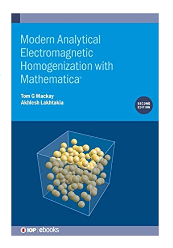
Authors Tom G. MacKay and Akhlesh Lakhtakia provide an overview of state-of-the-art analytical homogenization formalisms used to estimate the effective electromagnetic properties of complex composite materials. This book introduces the reader to homogenization and progressing, and covers constitutive and depolarization dyadics as well as homogenization formalisms for linear and nonlinear materials. It also dives into these topics’ applications with multiple examples using Mathematica code. To enable readers to readily perform their own Mathematica calculations, the book includes explicit formulas provided for the homogenization of isotropic, anisotropic and bianisotropic composite materials, as well as numerical data for a wide range of representative homogenized composite materials. This text is a valuable reference for PhD students and researchers working on the electromagnetic theory of complex composite materials.
Coming Soon from Stephen Wolfram
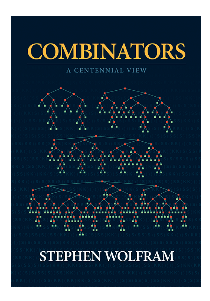
Be sure to sign up for updates on Stephen Wolfram’s forthcoming book, Combinators: A Centennial View.
Combinators have inspired ideas about computation ever since they were first invented in 1920, and in this innovative book, Wolfram provides a modern view of combinators and their significance. Informed by his work on the computational universe of possible programs and on computational language design, Wolfram explains new and existing ideas about combinators with unique clarity and stunning visualizations, as well as provides insights on their historical connections and the curious story of Moses Schönfinkel, inventor of combinators. Though invented well before Turing machines, combinators have often been viewed as an inaccessibly abstract approach to computation. This book brings them to life as never before in a thought-provoking and broadly accessible exposition of interest across mathematics and computer science, as well as to those concerned with the foundations of formal and computational thinking, and with the history of ideas.
If you’re interested in finding more books that use the Wolfram Language, check out the full collection on the Wolfram Books site. If you’re working on a book about Mathematica or the Wolfram Language, contact us to find out more about our options for author support and to have your book featured in an upcoming blog post!
© Copyright 2000-2025 COGITO SOFTWARE CO.,LTD. All rights reserved